Being a small business employer in Australia comes with a host of responsibilities. At SmallBizToolbox, we understand the challenges you face in navigating the complex landscape of employment laws and regulations.
This guide will walk you through the key obligations you must fulfill as an Australian employer, from legal requirements to employee rights and workplace policies. By understanding and meeting these responsibilities, you’ll create a fair, safe, and productive work environment for your team.
Types of Responsibilities
The responsibilities of an Australian employer can be categorized into various types that you need to navigate effectively. These responsibilities ensure not just compliance with the law but also promote a healthy workplace culture.
- Legal Obligations
- Employment Standards
- Health and Safety
- Diversity and Inclusion
- Employee Rights
This multifaceted approach will help you foster a better working environment.
| Type of Responsibility | Description |
| Legal Obligations | Compliance with applicable laws and regulations |
| Employment Standards | Minimum wage and working conditions |
| Health and Safety | Protection of employee wellbeing |
| Diversity and Inclusion | Fostering an inclusive workplace |
| Employee Rights | Respecting workers’ rights and entitlements |
What Are Your Legal Obligations as an Australian Employer?
As an Australian employer, you must comply with various legal obligations to ensure fair and safe working conditions for your employees. Understanding these requirements is essential for running a compliant and successful business.
Fair Work Act Compliance
The Fair Work Act 2009 forms the foundation of employment law in Australia. It establishes minimum employment standards, including pay rates, leave entitlements, and working hours. You must adhere to the National Employment Standards (NES), which provide 11 minimum entitlements to all employees. These include maximum weekly hours, requests for flexible working arrangements, and parental leave.
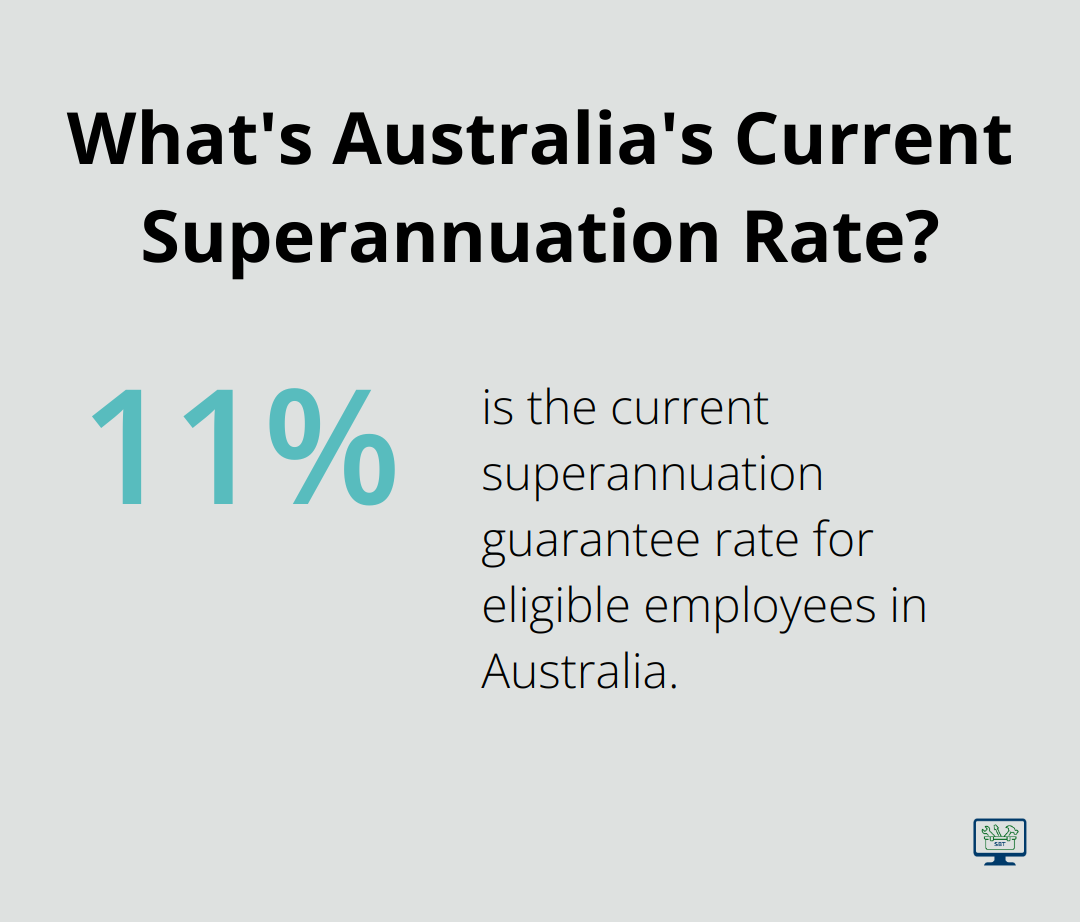
To maintain compliance, check the Fair Work Ombudsman website regularly for updates on minimum wage rates and award conditions. The minimum wage undergoes an annual review, with changes typically taking effect on July 1st. In 2024, the national minimum wage stands at $23.23 per hour (or $882.80 per week for full-time employees).
Workplace Health and Safety
Providing a safe work environment is not only a legal requirement but also vital for employee wellbeing and productivity. The Work Health and Safety Act mandates that you offer a safe workplace, adequate training, and proper equipment.
Perform regular risk assessments to identify potential hazards in your workplace. Implement safety procedures and supply necessary personal protective equipment (PPE). Maintain detailed records of all safety-related activities and incidents.
Superannuation Contributions
You must pay superannuation contributions for eligible employees. The current superannuation guarantee rate is 11% of an employee’s ordinary time earnings. This rate will increase to 11.5% on July 1, 2025.
Pay superannuation at least quarterly to avoid penalties. The ATO’s Small Business Superannuation Clearing House (a free service) can help you manage your superannuation obligations efficiently.
Taxation Responsibilities
Your tax obligations include:
- Registering for Pay As You Go (PAYG) withholding
- Deducting the correct amount of tax from employee wages
- Reporting and paying these amounts to the Australian Taxation Office (ATO)
You must also provide payment summaries to employees and lodge an annual payment summary report with the ATO. With the introduction of Single Touch Payroll (STP), most employers now report payroll information to the ATO each pay cycle.
Record Keeping
Proper record keeping is a legal requirement and helps you manage your business effectively. You must maintain accurate records of employee details, pay, hours worked, leave taken, and superannuation contributions. These records should be kept for at least seven years and be readily accessible if requested by the ATO or Fair Work Ombudsman.
Fulfilling these legal obligations can be challenging, but it’s necessary for your business’s success. Tools designed for Australian small businesses can help you navigate these requirements more efficiently. By meeting these responsibilities, you create a fair and productive work environment that benefits both your business and your employees. Now, let’s explore the rights and entitlements you must provide to your employees.
What Rights Must You Provide Your Employees?
As an Australian employer, you must uphold your employees’ rights and entitlements. These rights form the foundation of a fair and productive workplace. Let’s explore the key areas you need to focus on.
Pay Rates and Awards
Correct payment of your employees is non-negotiable. The national minimum wage ($24.10 per hour) serves as the absolute baseline. However, most employees fall under an industry award or enterprise agreement that sets higher rates.
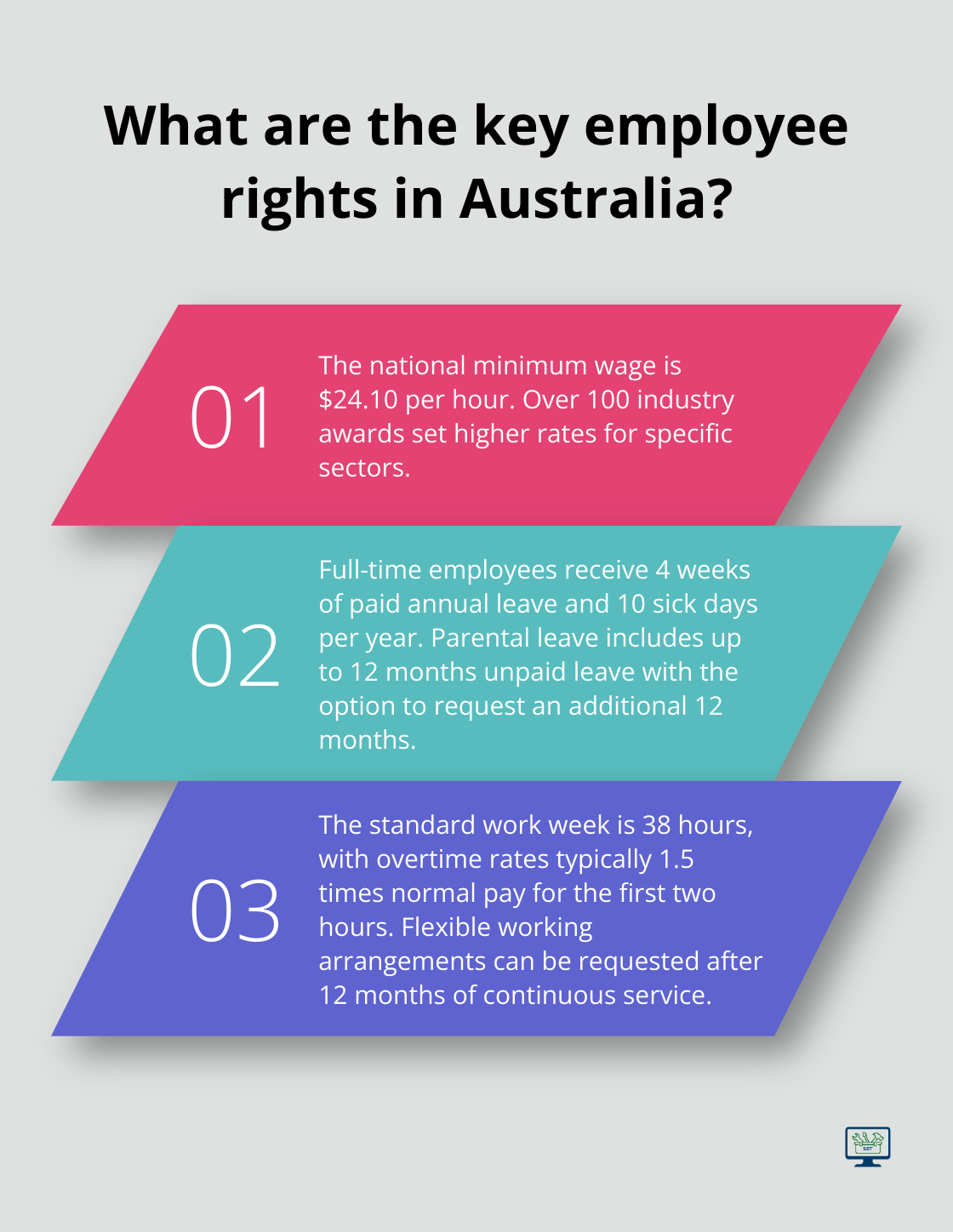
Awards are legal documents that outline minimum pay rates and conditions for specific industries or occupations. Australia has over 100 awards, so you must identify which one applies to your business. The Fair Work Ombudsman’s website offers a tool to find the relevant award for your employees.
You can pay above award rates, but never below. Penalties for underpayment can be severe (fines of up to $66,600 per contravention for companies).
Leave Entitlements
Full-time employees receive four weeks of paid annual leave per year (shift workers may get up to five weeks). Part-time workers get a pro-rata amount based on their hours worked.
Full-time employees are entitled to 10 sick days per year. Unused personal leave carries over to the next year.
Parental leave entitlements include up to 12 months of unpaid leave for eligible employees, with the right to request an additional 12 months. The Australian government also provides Parental Leave Pay for up to 18 weeks at the national minimum wage.
Long service leave varies by state and territory but typically starts after 10 years of continuous service with the same employer.
Working Hours and Overtime
The standard work week in Australia is 38 hours, but this can be averaged over a defined period depending on the applicable award or agreement. Any work beyond these hours may attract overtime rates (typically 1.5 times the normal rate for the first two hours and double time thereafter).
Flexible working arrangements have become increasingly important. Employees with 12 months of continuous service have the right to request flexible arrangements if they meet certain criteria (such as being a parent or carer).
Termination and Redundancy
When ending employment, you must follow proper procedures. This includes providing the correct notice period or payment in lieu of notice. The minimum notice periods range from one to five weeks, depending on the employee’s length of service and age.
In cases of redundancy, eligible employees receive severance pay. The amount varies based on their years of continuous service, starting at four weeks’ pay for one year of service and increasing up to 16 weeks for at least nine years of service.
Small businesses (fewer than 15 employees) are exempt from paying redundancy pay in most cases. However, you still need to follow fair dismissal processes and provide appropriate notice.
Understanding and implementing these employee rights and entitlements keeps you compliant with the law and helps attract and retain top talent. Now, let’s move on to discuss the workplace policies and procedures you need to establish to create a safe and inclusive work environment.
How to Create Effective Workplace Policies
Creating a positive work environment extends beyond legal compliance. It involves fostering a culture of respect, fairness, and productivity. Here’s how you can develop effective policies for your company:
Develop Clear Anti-Discrimination Policies
Craft a comprehensive anti-discrimination policy. This should outline your commitment to equal opportunity and fair treatment for all employees, regardless of age, gender, race, religion, or any other protected characteristic.
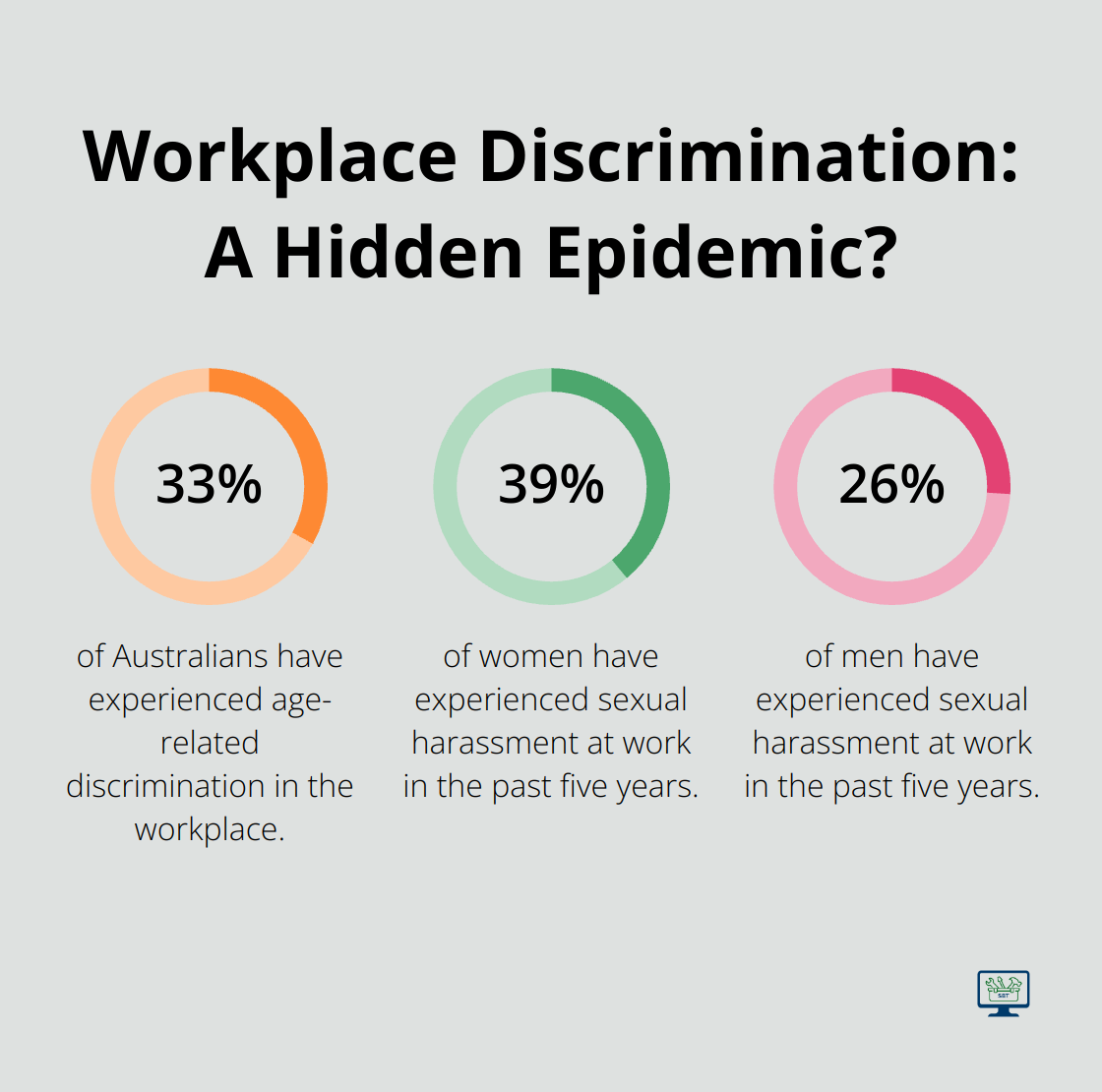
The Australian Human Rights Commission reports that 33% of Australians have experienced age-related discrimination in the workplace. Address this issue by implementing blind recruitment processes and providing diversity training for all staff members.
Implement Strong Anti-Harassment Measures
Workplace harassment remains a significant issue. The Australian Human Rights Commission reports that 39% of women and 26% of men have experienced sexual harassment at work in the past five years.
Establish a zero-tolerance policy for harassment and bullying. Define unacceptable behavior clearly and outline the consequences. Provide regular training sessions on respectful workplace behavior and bystander intervention techniques.
Establish Effective Grievance Procedures
A well-defined grievance handling process addresses workplace issues promptly and fairly. The Fair Work Commission reports 13,281 unfair dismissal applications were lodged in 2021-22, highlighting the importance of proper dispute resolution mechanisms.
Create a step-by-step procedure for employees to report concerns confidentially. Designate impartial individuals to investigate complaints and ensure timely resolution. Consider offering mediation services for complex disputes.
Implement Performance Management Systems
Effective performance management is key to employee growth and business success. Gallup’s research has found that only a small percentage of employees strongly agree their employer or manager delivers on effective performance management.
Develop a structured performance review process with clear metrics and goals. Schedule regular check-ins between managers and employees to discuss progress and address any issues. Use performance management software to track goals and provide continuous feedback.
These policies shape your workplace culture. Review and update them regularly to ensure they remain relevant and effective. Communicate these policies clearly to all employees and provide easy access to them (perhaps through an employee handbook or intranet portal). Understanding workplace compliance in Australia is crucial for employers to create effective and legally sound workplace policies.
Final Thoughts
Small business employers in Australia face numerous responsibilities. You must comply with legal obligations, respect employee rights, and implement effective workplace policies. These elements create a fair, safe, and productive work environment that attracts and retains top talent. You should stay informed about legislative changes by regularly checking authoritative sources like the Fair Work Ombudsman and the Australian Taxation Office websites.
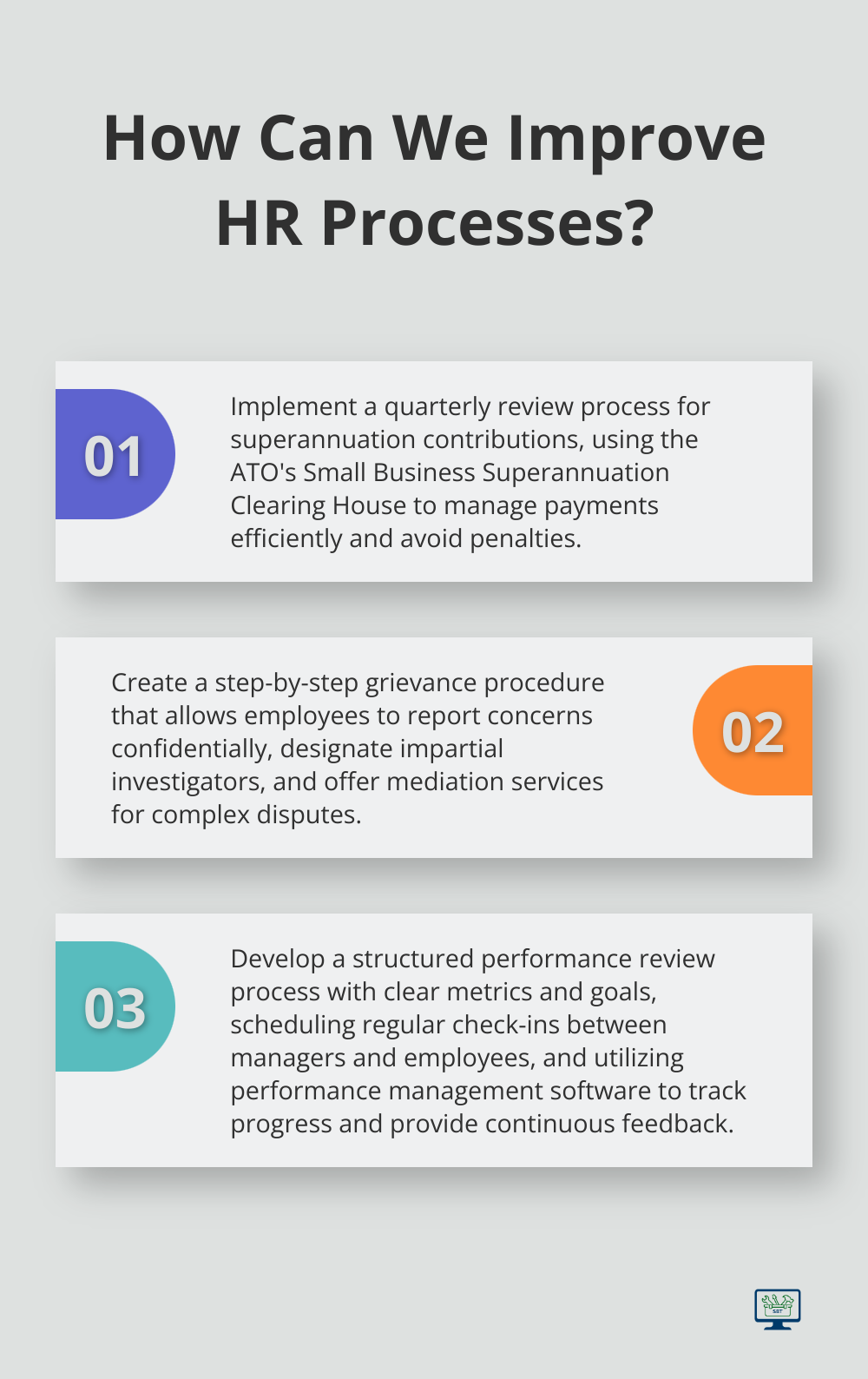
Managing these responsibilities can challenge small business employers. SmallBizToolbox offers resources and tools designed for Australian small business owners. Our features can help you streamline operations and focus on growing your business. We recommend you review your current practices, update policies, and seek professional advice when needed.
You can confidently navigate the complexities of being a small business employer in Australia. Prioritize your obligations as an employer to invest in the long-term success of your company and employees. With the right approach and resources, you will ensure compliance while fostering a positive and productive workplace.
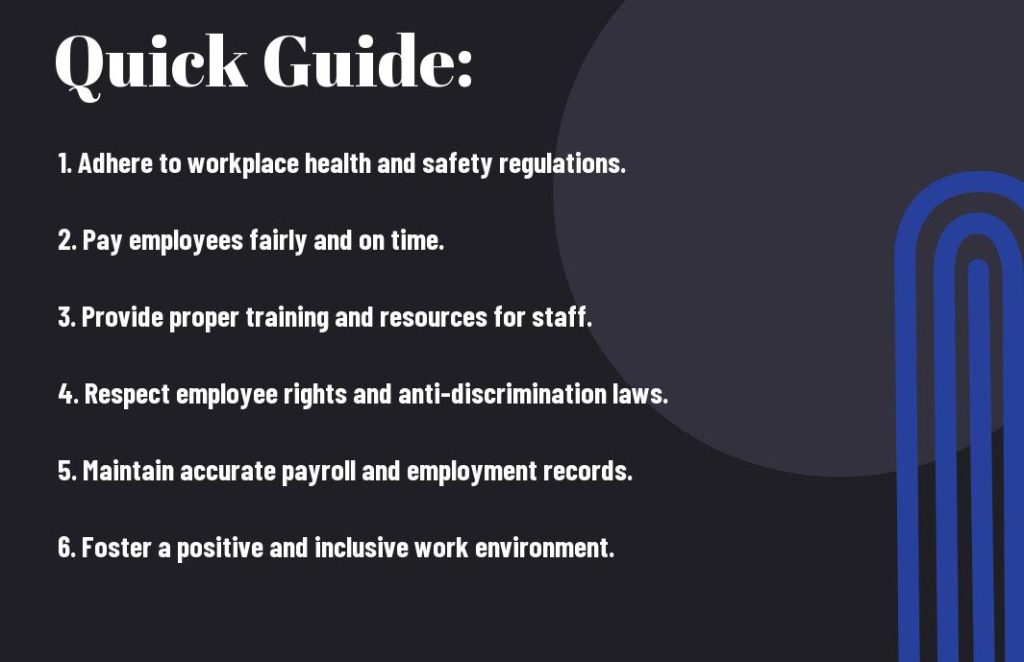
FAQ
Q: What are my primary responsibilities regarding workplace health and safety as an Australian employer?
A: As an Australian employer, you have a legal obligation to ensure the health and safety of your employees in the workplace. This includes providing a safe working environment, adequate training, and necessary safety equipment. You must regularly assess risks and implement control measures to mitigate those risks. Additionally, you are required to consult with your employees about health and safety matters and ensure that they are aware of and trained in emergency procedures.
Q: What are my obligations in terms of pay and entitlements for my employees?
A: Employers in Australia must comply with relevant employment laws, which include ensuring employees are paid at least the minimum wage set by the Fair Work Commission. Additionally, you are responsible for providing entitlements such as annual leave, personal/sick leave, and long service leave in accordance with the National Employment Standards (NES). Employers should also keep accurate records of hours worked and entitlements applied to ensure compliance and transparency.
Q: How do I ensure compliance with anti-discrimination laws as an employer?
A: As an Australian employer, you are required to uphold anti-discrimination laws that prohibit unfair treatment based on attributes such as age, gender, race, disability, and sexual orientation. To ensure compliance, you should develop and implement anti-discrimination policies, provide training to staff about these policies, and create a positive workplace culture that values diversity and inclusion. It is also important to address any complaints or grievances related to discrimination promptly and effectively.
How useful was this Resource?
Click on a star to rate it!
Average rating 0 / 5. Vote count: 0
No votes so far! Be the first to rate this post.
We are sorry that this post was not useful for you!
Let us improve this Resource!
Tell us how we can improve this Resource?













